May 20, 2025 | 23:00 GMT +7
May 20, 2025 | 23:00 GMT +7
Hotline: 0913.378.918
May 20, 2025 | 23:00 GMT +7
Hotline: 0913.378.918
Many visitors unfamiliar with the area may never think that only 15 years ago, the rows of floating ponds with oxygen fans running day and night were once rice fields of "dried crop and rotten water". Some households have pioneered gathering soil and building banks, turning their fields into floating ponds. When the business blossomed, people started to learn and follow each other.
Witnessing the potential of the new direction, the commune and district authorities have "turned on the green light" for the conversion by planning Tram Long into the key aquaculture area of Ung Hoa. Both people and commune officials have been passionate about fish farming ever since.
Tram Phu Fisheries Cooperative’s 50 ha followed VietGAP standards, were granted a certificate in 2021 and expired in 2023, but Director Le Xuan Huu remains confident. “VietGAP does not increase the economic efficiency but the labor requirement instead. The cost is high but the fish still sells at the same price as not VietGAP-certified ones, so we all stop”.
However, the people still uphold the spirit of VietGAP during production as its standards emphasize the importance of strict disease prevention. Although fish prices this year are lower than last year, households well-complying with VietGAP techniques can still profit VND 7,000 - 8,000/kg. With an average yield of 25-27 tons of fish per year, the profit is estimated at VND 200 million.

The floating pond system in Tram Phu. Photo: Duong Dinh Tuong.
“The most dangerous threat now is viral diseases on carp. As for the symptoms, the fish stops eating, swimming weakly, and then drifting to the shore to death very quickly, losing tens of tons of fish is completely possible. Once sick, whether it is normal carp or commercial carp weighing 2 - 3 kg about to be sold, it still dies. The diseases are still avoidable if you know how to prevent them, and the key point is to disinfect the ponds at least once a month, and every 15 - 20 days drop yeast to the bottom of the ponds to decompose the residue in the water,” said Director Huu.
Unlike cattle and poultry which farmers can feed medicine into their mouth or hold tightly to make an injection, aquatic products are always underwater, and difficult to catch and treat, so disease prevention work becomes a decisive factor in a fish farm’s success.
“When you have already gotten used to the job, you can tell whether the fish are sick or healthy just by looking at the water’s color. After harvesting two liters of fish, I often clean the bottom of the pond, let it dry under the sun for 15 days and then sprinkle lime to disinfect it.
“90% of the ponds here are floating ponds, the bottom is the mud of old rice fields, only the shore is pushed high, so they are very well-ventilated. The harvest is very easy but quick dehydration poses as a disadvantage, thus requiring continuous water supply,” said Huu.
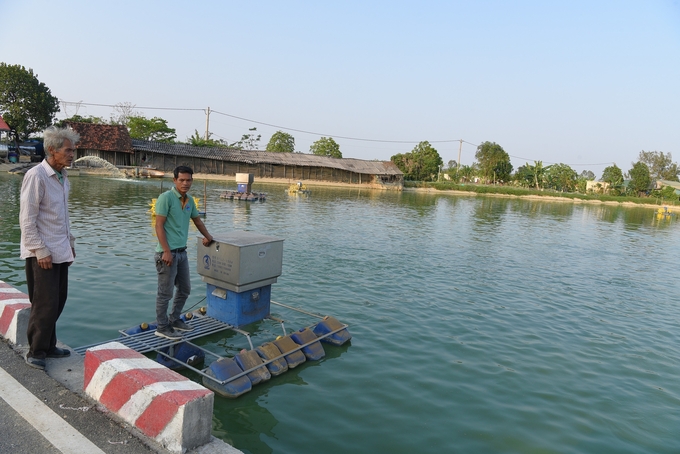
The father and son duo, Le Xuan Bong and Le Quang Khai, working on the fish farm. Photo: Duong Dinh Tuong.
The father and son duo of Le Xuan Bong and Le Quang Khai represent the two generations of fish farming, the early era and the modern era in Tram Phu commune. Bong previously raised 3 mau of fish (Vietnamese measurement, 1 mau = 3,600 m2) with no capital and no advanced technique. In return, the water back then was fairly clean so the fish was less likely to get sick. He put in a lot of effort, but the profit was not worthwhile.
Two years ago, because of old age, Bong planned to retire. His son, who was a general contractor, reached out and took care of the business. No matter how hard Bong tried to stop him, Khai still stood firm with his decision.
From the original 3-mau pond, Khai has bid for 6 more ponds to upscale to 10 mau. Already having capital, he invested VND 250 million to buy feeding machines, water fans, and cameras to monitor the situation of fish all day and night since there were ponds up to 2 km away from home.
The water environment is getting worse, so on average he must drop biological products 2-4 times per month to develop microorganisms, treat organic humus, and overcome harmful factors. At the same time, he also treats mushroom and parasite infection 1 - 2 times per month.

Le Xuan Bong is checking the fish. Photo: Duong Dinh Tuong.
Khai has a team of technicians from the bran manufacturing company. They come to test the water once a week to learn about the pond situation and provide specific advice. Thanks to the application of science and technology, the output of the fish he collected per unit area doubled compared to his father's era. However, Bong sometimes still gives Khai some advice condensed throughout a lifetime.
Translated by Samuel Pham
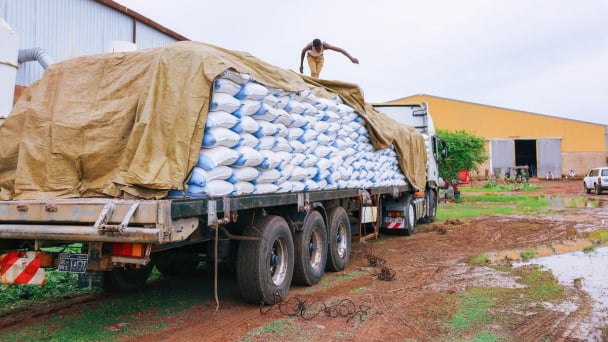
(VAN) In 2024, over 295 million people across 53 countries and territories faced acute hunger—an increase of almost 14 million people compared to 2023, while the number of people facing catastrophic levels of hunger reached a record high.
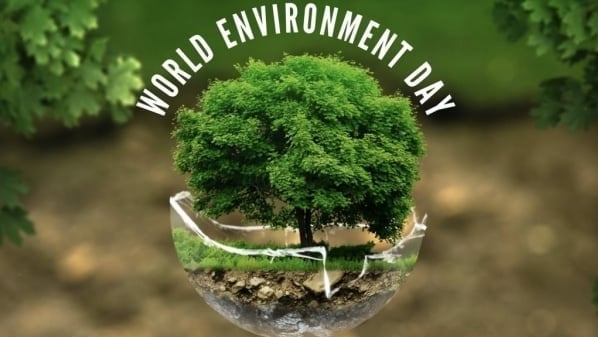
(VAN) World Environment Day 2025 (June 5) carries the theme 'Beat Plastic Pollution' continuing to emphasize the global urgency of addressing the plastic waste crisis.
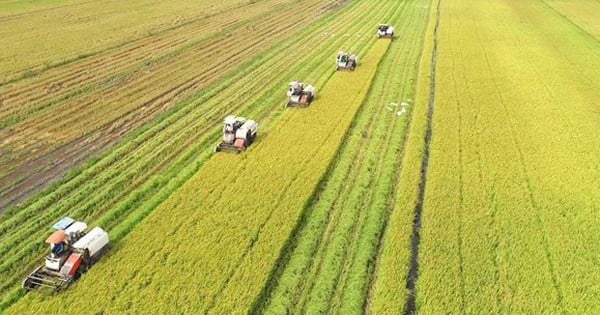
(VAN) This was the assessment shared by experts at the workshop titled 'Assessing the Role and Potential of Low-Emission Rice Production Systems in Vietnam,' held on the morning of May 19.

(VAN) Cai Rong Port is the fisheries control center of Quang Ninh, helping to monitor fishing vessels, combat IUU fishing, and remove the EC's 'yellow card'.
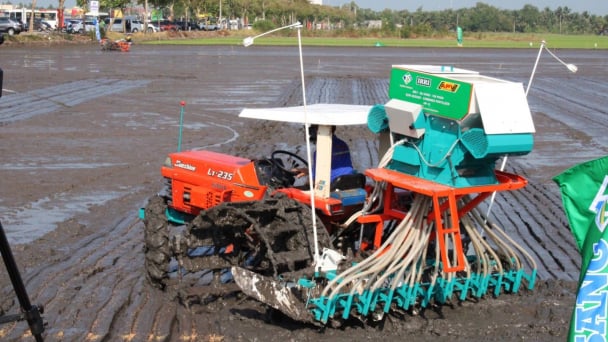
(VAN) The German Agricultural Society (DLG) explores the possibility of establishing a mechanization service center in Vietnam’s Mekong Delta to support farmers in accessing and utilizing advanced machinery.
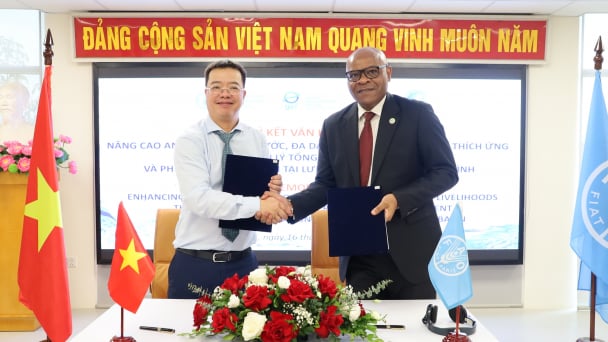
(VAN) On May 16, the Department of Water Resources Management, in collaboration with the Food and Agriculture Organization of the United Nations (FAO), held a signing ceremony for the GEF-8 project document.
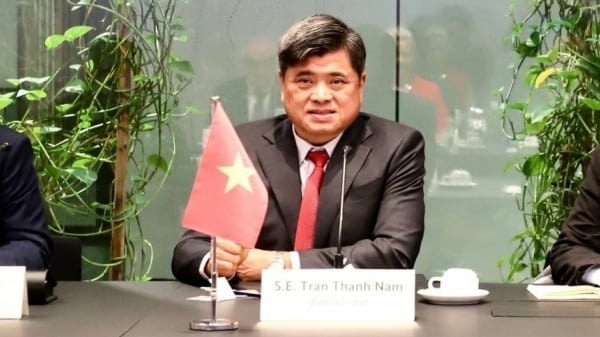
(VAN) Food safety, mechanization, vocational training, and market opening are key areas of cooperation expected between the Vietnamese Government and the Federal Republic of Germany.